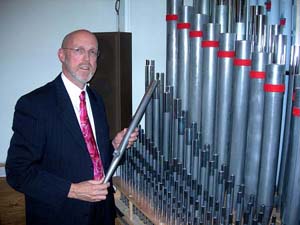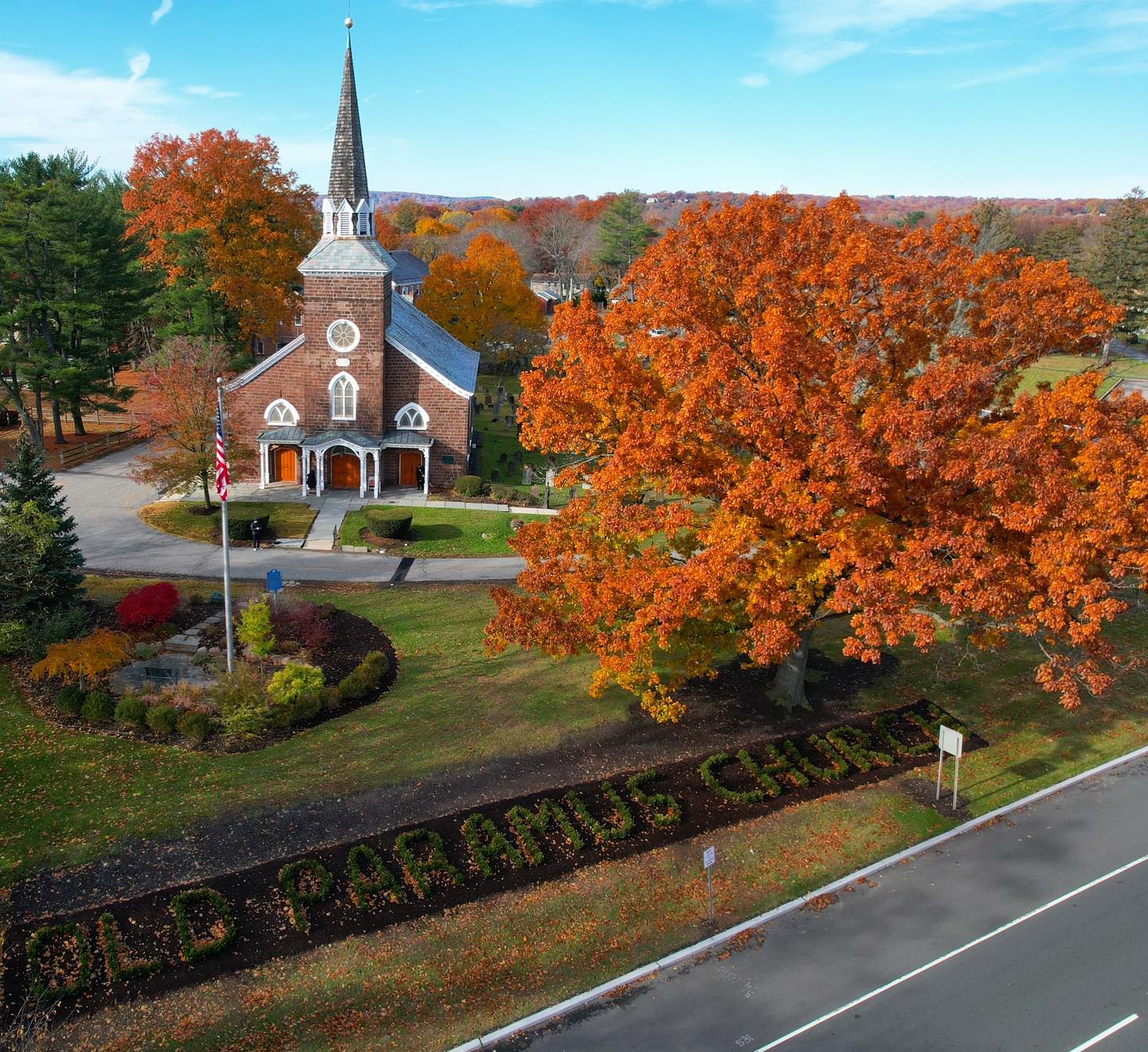A monthly message, “Make a Note of It”, written by Stewart Holmes, is published in The Spire.
CLICK HERE or on the SPIRE button in the main menu for the current issue of the newsletter.
The Old Paramus Organ
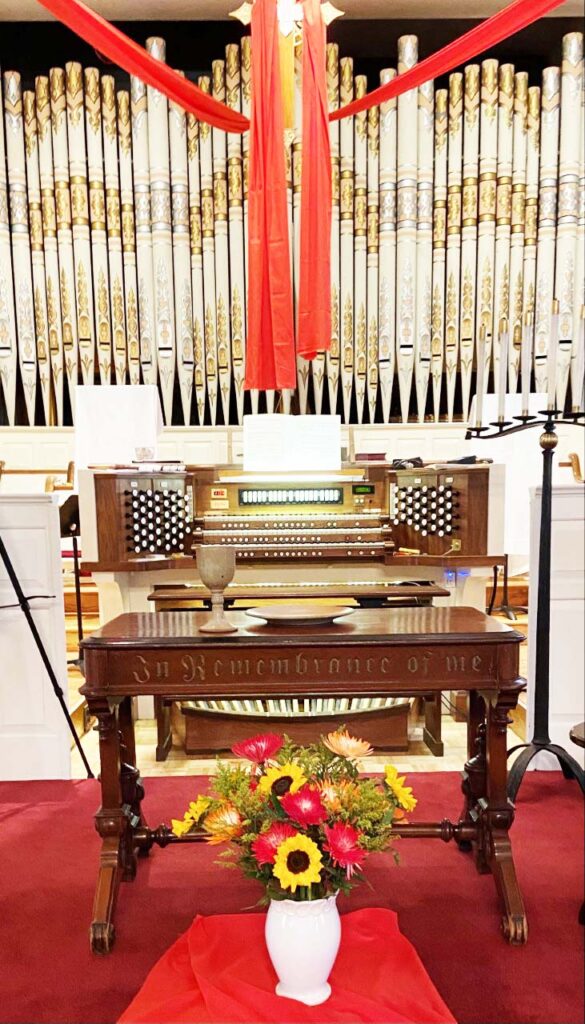
The main organ is located behind the 1890’s facade. Although these facade pipes actually played when the first organ was installed here, they were pitched at different levels, not unusual in those days.
The OPRC organ is controlled by a state of the art console. It’s actually a computer attached to keyboards. When depressed, each key send a signal to the computer which in turn sends a signal to open the small “door” attached to the windchest under each pipe. When that “door” opens it allows the air within the windchest to escape up through the pipe.
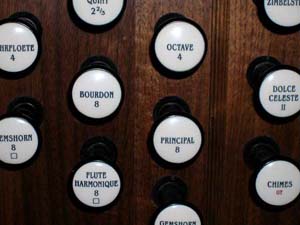
The knobs on each side of the keyboards control which row of pipes, called ranks, are to be played. Each rank of pipes (usually 61 pipes) has a specific sound and pitch. The type of sound is indicated by the name, and the pitch is indicated by the number on each drawknob. The number 8 indicates that the rank of pipes will sound at the standard pitch, like a piano. The number 4 indicates the pitch will actually be an octave higher.
When a button, called a piston and located below each keyboard, is pressed a combination of drawknobs can be either pulled out or pushed in. This is called “combination action”. These pistons are programmed by the organist, enabling him or her to quickly change registrations.
The organist has 256 different levels of memory available to program the combination action. The console also has an instant transposer.
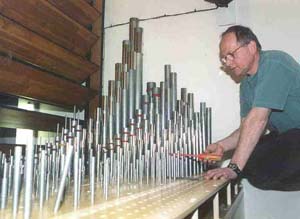
This organ was constructed over a period of two years. Here the builder, Lawrence Nevin, is installing pipes in the swell division. Notice the empty holes in the foreground? These are the holes in the windchest, mentioned in the console photo caption. A pipe will soon fill each one of the holes when it is “voiced” to blend with its neighboring pipes.
THE GREAT DIVISION
The organ is divided into divisions, each division controlled by one of the keyboards. The Great Division pipes are located behind the right side of the front facade. This is a photo of some of the pipes in that division. It is the most important division of the organ.
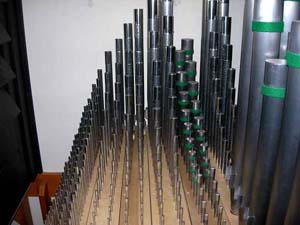

THE SWELL DIVISION
This division, located behind the left side of the facade, is enclosed in a chamber with louvered shutters which enable the folume of the organ to be controlled by the organist. Swell divisions are known for their reed pipes, shown here.
THE GALLERY DIVISION
Because of the complicated acoustical properties of this historic sanctuary the gallery division was added to help lead congregational singing. It is really a small organ in and of itself, and is controlled by the bottom keyboard on the console. Here our organist shows one of the pipes on during an “organ tour”.
